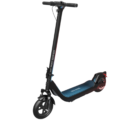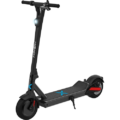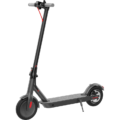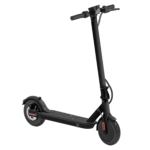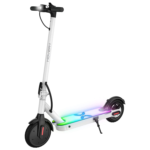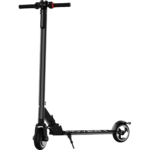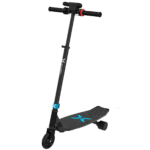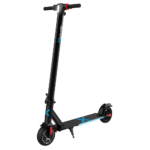- Home
- Scooters
- Electric Scooters
- Hover-1 Engine
Hover-1 Engine
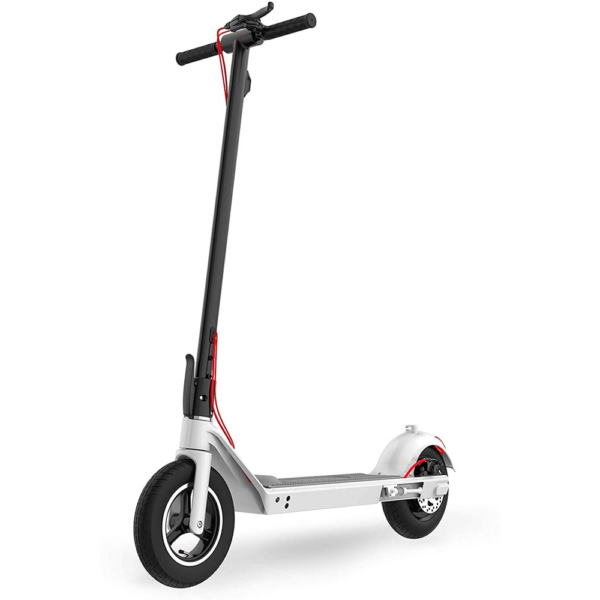

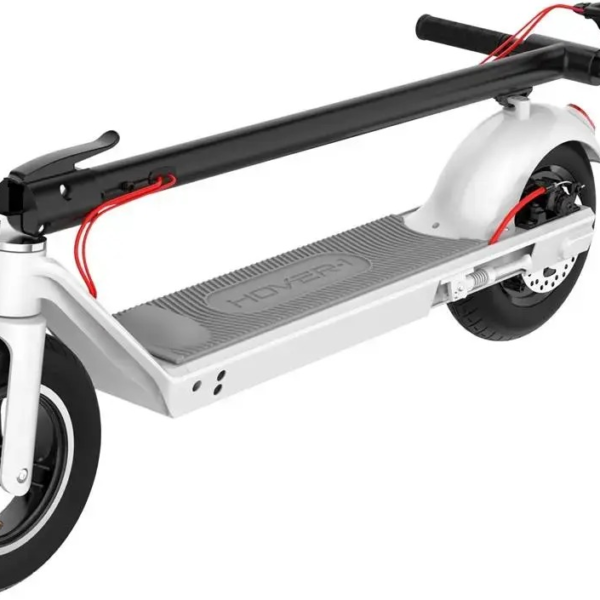

- Battery Range: 11.2 miles (18 km)
- Top Speed: 21.7 mph (35 km/h)
- Motor Power: 350 W
- Weight Capacity: 220 lb (100 kg)
- Charging Time: ~5 h
- Scooter Weight: 26.2 lb (11.9 kg)
PROS
- 21.7 mph top speed for its class
- 10″/10.5″ pneumatic tires for better road grip
- Rear disc brake with handle lever
- Front-release folding mechanism
- Rear LED brake light
CONS
- Modest 11.2-mile range
- No stated IP rating
- No app or smart locking
- Single mechanical brake only
Table of contents
- What Is the Hover-1 Engine?
- How the Hover-1 Engine Works
- Key Specifications (clean table)
- Design & Build Quality
- Performance Fundamentals
- Battery, Range & Efficiency
- Ride Quality & Comfort
- Braking & Safety Features
- Portability & Daily Usability
- Maintenance & Care
- Weather & Seasonal Considerations
- Hover-1 Engine vs Alternatives
- Who the Hover-1 Engine Is (and Isn’t) For
- FAQs
- Glossary
- Final Thoughts
If you want a compact, lightweight scooter for short urban hops, the Hover-1 Engine is built for exactly that job. It blends a simple folding design with pneumatic tires, a rear disc brake, and a 36 V lithium-ion battery. Because it prioritizes practicality over flash, the Hover-1 Engine suits riders who value a straightforward commute tool they can carry up stairs, stash under a desk, and maintain without much fuss. For younger riders, consider the age-appropriate Hover-1 My First E-Scooter as a safer starter option.
The Hover-1 Engine reaches a listed top speed of up to 21.7 mph (35 km/h) and a claimed range of up to 11.2 mi (18 km). We’ll unpack what those numbers mean in the real world, how the foot-pad throttle changes the ride feel, and which habits help you extend battery life—without hype and without guesswork.
What Is the Hover-1 Engine?
The Hover-1 Engine is a foldable, entry-level electric scooter with a 350 W brushless hub motor, a 36 V / 5.2 Ah lithium-ion pack, and 10-inch front / 10.5-inch rear inflated rubber tires. It weighs 26.23 lb (11.9 kg), supports riders up to 220 lb (100 kg), and folds to a slim profile that fits in closets, car trunks, and office corners.
It uses a foot-pad throttle on the deck rather than a thumb or twist throttle. With your front foot resting on the pad, you roll into acceleration by applying gentle pressure. Braking is handled by a handle-activated rear disc system, and a rear LED brake light increases visibility from behind. The design favors simplicity: there’s a single motor, no app requirement, and no complex tuning menus to navigate.
Because it’s small, light, and easy to stow, the Hover-1 Engine is ideal for students, last-mile commuters, and anyone who needs a scooter that’s simple to carry and straightforward to use.
How the Hover-1 Engine Works
Think of the scooter as a quiet, compact electric drivetrain on two air-filled wheels.
- Motor: A 350 W brushless hub motor in the rear wheel converts electrical energy into motion. Brushless motors are efficient and low-maintenance. As a result, you get smooth torque with minimal noise.
- Controller: A small electronic controller meters power from the battery to the motor. When you press the foot-pad throttle, the controller increases current and the scooter accelerates. It also enforces limits for speed, temperature, and battery protection.
- Battery: The 36 V battery stores energy in lithium-ion cells. Capacity is 5.2 Ah, which works out to roughly 187 Wh (36 V × 5.2 Ah). Because the pack is integrated into the deck, the scooter keeps a low center of gravity.
- Throttle: The foot-pad throttle is a pressure-activated pad set into the deck. Press down to go; ease off to coast. It feels natural after a short learning curve.
- Brakes: A mechanical rear disc brake adds predictable stopping power. Squeeze the lever to apply clamping force at the rear rotor; braking strength ramps with lever pressure.
In short, power flows from the battery to the motor through the controller, while your feet and hands provide the commands.
Key Specifications (clean table)
All values below are from the official manual; both imperial and metric units are shown where provided or directly convertible.
| Block | Item | Value |
|---|---|---|
| General | Model | H1-ENGN |
| Net Weight | 26.23 lb (11.9 kg) | |
| Max Supported Weight | 220 lb (100 kg) | |
| Minimum Rider Weight | 44 lb (20 kg) | |
| Minimum Turning Radius | “0°” (can pivot in place) | |
| Performance & Power | Motor Power | 350 W brushless hub |
| Max Speed | Up to 21.7 mph (35 km/h) | |
| Max Distance (rated) | Up to 11.2 mi (18 km) | |
| Battery, Charging & Electrical | Battery Voltage | 36 V |
| Battery Capacity | 5.2 Ah (~187 Wh) | |
| Battery Type | Lithium-ion | |
| Charge Time | Up to 5 hours | |
| Charger / Power Requirement | AC 100–240 V, 50–60 Hz | |
| Operating Temperature | 32–113 °F (0–45 °C) | |
| Storage Temperature | -4–104 °F (-20–40 °C) | |
| Build & Dimensions | Open Size (L×W×H) | 42.1 × 16.1 × 46.06 in (107 × 41 × 117 cm) |
| Folded Size (L×W×H) | 42.1 × 16.1 × 15.47 in (107 × 41 × 39.3 cm) | |
| Tires | Inflated rubber | |
| Tire Size | 10″ front / 10.5″ rear | |
| Tire Pressure | 36 PSI front / 30 PSI rear | |
| Safety & Control | Brake Type | Handle-activated rear disc |
| Lighting | Rear LED brake light | |
| Throttle | Foot-pad (deck-mounted) | |
| Features & Extras | Kickstand | Included |
| Battery Indicator | On deck | |
| Lock Hook | Included | |
| Cruise Control | Not listed | |
| Warranty & Compliance | Warranty | Manufacturer warranties apply (see packaging/region) |
| Manufacturer | DGL Group, Ltd. |
Design & Build Quality
The Hover-1 Engine has a clean, minimalist frame. The deck houses the battery, controller, and wiring, so the silhouette stays tidy. Because the battery sits low in the chassis, balance is natural at walking speeds. The deck offers enough usable space for a regular stance, and the grippy surface holds shoes well, even when it’s dusty.
The stem is straightforward and locks into place with a folding hinge near the front wheel. The folding interface uses a release button above the front wheel; to fold, you turn the wheel to the side and press the release. The hinge design is simple, which helps durability and keeps weight down. When latched properly, the stem feels secure for an entry-level scooter. As with any folding mechanism, you should check the latch before each ride.
The cockpit mirrors the “keep it simple” philosophy. There’s a brake lever on the left, a power button and battery indicator on the deck, and the rest is uncluttered. Because the throttle is a deck pad, the handlebars remain clean; your right hand doesn’t manage a thumb throttle. Many riders enjoy the open grip and the intuitive foot control after a few rides.
Fit-and-finish is consistent with the scooter’s price class. You will see exposed fasteners and a functional look. However, the panels fit well, the cabling is routed neatly, and the parts you touch feel sturdy enough for daily use.
Performance Fundamentals
Acceleration feel. With a 350 W motor, the Hover-1 Engine eases into motion rather than launching. From a standstill, press the foot pad smoothly and give the controller a second to deliver current. Because torque builds progressively, starts feel predictable and easy to manage in crowds or along sidewalks. Off the line, lighter riders notice crisper pickup. Heavier riders will feel a gentler push, especially uphill.
Cruising stability. The 10-inch front and 10.5-inch rear pneumatic tires do the heavy lifting for stability. They add gyroscopic steadiness, which helps the scooter track straight at its typical cruising speeds. The wheelbase and low deck settle the ride. At the upper end of the speed range, you should keep your stance athletic and your arms relaxed. As with most lightweight folders, firm inputs reduce wobble.
Hill-climb behavior (~7–10 % grades). On modest hills, the scooter climbs at a reduced pace. On 7–10 % grades, expect speed to dip notably, particularly for riders near the 220 lb (100 kg) limit. Because you have a single 350 W motor and a compact battery, the drive prioritizes efficiency and thermal safety. Therefore, on long, steep inclines, give it a break, or help with a few kicks to keep controller temperatures down.
Battery, Range & Efficiency
The Hover-1 Engine uses a 36 V / 5.2 Ah lithium-ion pack. That’s around 187 Wh of energy. Paper specifications list up to 11.2 mi (18 km) of maximum range under ideal conditions. Real-world range depends on several factors:
- Rider weight: Lighter riders stretch distance; heavier riders draw more current.
- Terrain: Smooth, flat pavement goes farther; hills consume energy quickly.
- Speed habits: Holding near top speed drains the pack faster than cruising moderately.
- Tire pressure: Running the recommended 36 PSI front / 30 PSI rear reduces rolling losses.
- Temperature: Batteries deliver fewer watt-hours in the cold; hot days can trigger thermal protection.
In mixed conditions with moderate speeds, expect a practical range closer to 5–9 mi (8–14 km) for most adults. Taller hills, frequent stops, or headwinds pull that lower. Conversely, lighter riders who pace themselves on flat paths can land near the higher end.
Charging. A full charge takes up to 5 hours using the included charger. For best battery health, avoid deep discharges. Instead, charge after rides and store the scooter at 50–80 % if you will not use it for a few weeks. Never charge below freezing; wait until the pack reaches room temperature.
Efficiency tips. Smooth throttle inputs, steady speeds, and correctly inflated tires deliver the most distance per watt-hour. Because the battery is modest in capacity, disciplined habits matter more here than on larger scooters.
Ride Quality & Comfort
Tires do most of the comfort work. The inflated rubber construction absorbs small cracks and road seams better than solid tires. Because the scooter does not list a suspension, tire pressure tuning becomes your comfort knob. Stay near the recommended values, then adjust slightly to taste. Lower pressures add grip and cushion but increase pinch-flat risk; higher pressures roll faster but transmit more vibration.
The foot-pad throttle changes stance dynamics a bit. You accelerate by pressing with your front foot. This feels natural after a short adjustment period and keeps your hands relaxed. On choppy surfaces, keep your knees bent and your weight centered over the deck; that stance keeps the pad input consistent and prevents unintended surges.
The deck height is moderate, so kicks and low-speed maneuvers are comfortable. Stem flex is typical for a lightweight folder—noticeable if you yank on the bar, yet acceptable in smooth riding. As always, soft hands and strong core engagement keep the chassis calm.
Braking & Safety Features
The mechanical rear disc brake is the primary stopping system. Because it’s cable-actuated, modulation depends on lever feel and cable tension. Out of the box, bite is gentle, then ramps as you squeeze. After a few rides, you will learn how much lever travel produces firm deceleration without skidding the rear.
The scooter includes a rear LED brake light, which brightens under braking and improves visibility from behind. Reflective accents are minimal; add a reflective vest or ankle bands if you ride at dusk. A front headlight is not listed in the manual, so bring a clip-on bar light or helmet light for night rides.
There is no mention of ABS, regenerative braking, or traction control. Grip and stability therefore come down to tire pressure, tread condition, and rider inputs. Keep the rubber inflated correctly and the tread clear of embedded debris.
Because an official IP rating is not specified, treat the scooter as light-splash resistant at most. Avoid standing water and heavy rain; more weather guidance appears below.
Portability & Daily Usability
At 26.23 lb (11.9 kg), the Hover-1 Engine is easy to carry up a flight of stairs or onto a train. The folded footprint—42.1 × 16.1 × 15.47 in (107 × 41 × 39.3 cm)—slides under most office desks and into closet corners. The folding routine is a bit different: turn the front wheel to the side, then press the release button above the wheel to unlock the hinge. After a few tries, it becomes quick and repeatable.
The lock hook provides a snag point when folded, and the kickstand works reliably on flat surfaces. Because the battery is not removable, plan to charge the whole scooter near an outlet. For security, use a sturdy U-lock or a quality chain through the rear triangle or deck cutouts, and never leave the scooter outdoors overnight.
Day to day, the clean cockpit and minimal displays reduce distractions. The battery indicator on the deck is easy to check while stopped. However, since information is sparse, consider keeping mental notes about distance and terrain so you don’t push range too close.
Maintenance & Care
Simple, regular care keeps the Hover-1 Engine riding well:
Before every ride
- Check tire pressure: 36 PSI front / 30 PSI rear.
- Tug the stem to verify the hinge is latched.
- Squeeze the brake lever; confirm solid feel and normal rotor clearance.
- Glance at the battery indicator.
Weekly (or every ~30 miles / 50 km)
- Inspect tire tread for embedded debris; remove sharp objects.
- Wipe dirt from the deck, wheels, and brake caliper.
- Check fasteners you can see and safely access; snug gently if needed.
- Test brake performance in a safe area and adjust cable tension if lever travel feels long.
Monthly
- Deep-clean and inspect the folding latch. Apply a small amount of light lubricant to hinge pivots if the manual allows; keep oils away from the rotor and pads.
- Check the brake pads for wear; replace if thin or glazed.
- Evaluate battery behavior. If range drops sharply, rebalance with a slow full charge once and resume shallow cycles.
Battery storage
- Store in a cool, dry place around 50–80 % charge for longer periods.
- Avoid extreme temperatures (see the spec table) and never charge when the pack is very cold or very hot.
Weather & Seasonal Considerations
Rain. Since no formal IP rating is listed, avoid heavy rain and deep puddles. Water can enter housings and compromise connectors. If you get caught in a light shower, ride gently, avoid standing water, and dry the scooter thoroughly afterward. Brake distances increase on wet rims and rotors.
Heat. Hot days reduce power if the controller or motor gets warm. When performance sags, slow down and give the system time to cool. Do not leave the scooter baking in a car; high temperatures degrade batteries.
Cold. Batteries deliver fewer watt-hours in low temperatures, so range shrinks. Pre-warm the pack indoors before riding, and expect more voltage sag on hills. Charge only at room temperature.
Surface grip. Painted lines, metal plates, and wet leaves get slippery. Lower your speed, brake earlier, and keep your body quiet over slick patches. Because weight is modest, the scooter responds quickly to small balance changes—use that to your advantage.
Hover-1 Engine vs Alternatives
Within the lightweight commuter class, the Hover-1 Engine leans toward simplicity, portability, and price. It is not a long-range hauler or a high-power hill crusher; instead, it shines on flat commutes, campus routes, and neighborhood errands.
- Against compact commuters: The Engine’s foot-pad throttle keeps the bars tidy and may feel more natural to some riders. Others will prefer a thumb throttle for fine low-speed control. Weight is competitive; the folded height is low, which helps under-desk storage.
- Against mid-range performance scooters: Heavier models offer stronger hill performance, hydraulic or dual brakes, and larger batteries. However, they weigh more and take more space. If you carry your scooter often, the Engine’s low mass wins.
- Against off-road or fat-tire models: Those are built for rough ground and long rides. The Engine focuses on paved paths and short hops. If your routes are smooth and urban, you avoid paying for capability you won’t use.
In short, the Hover-1 Engine excels when portability, ease of use, and straightforward maintenance matter most.
Who the Hover-1 Engine Is (and Isn’t) For
Great for
- Students crossing campus or hopping between classes.
- City riders who combine scooter, bus, and train.
- Apartment dwellers who carry a scooter upstairs and store it indoors.
- New riders who want a gentle learning curve and predictable controls.
Not ideal for
- Hilly neighborhoods with long, steep grades.
- Riders who need 20+ mi (32+ km) of daily range without charging.
- Night commuters who require integrated high-output headlights.
- Heavy riders near the 220 lb (100 kg) limit who also face steep climbs.
Choose it when you value portability and simplicity over brute force.
FAQs
1) How fast does the Hover-1 Engine go?
It’s listed up to 21.7 mph (35 km/h). Real-world speeds vary with rider weight, battery level, and terrain.
2) What range should I expect day to day?
The Hover-1 Engine claims up to 11.2 mi (18 km). In mixed riding, most adults see 5–9 mi (8–14 km) per charge.
3) Does it have cruise control?
Cruise control is not listed. Plan to manage speed with the foot-pad throttle.
4) Is there regenerative braking?
The manual specifies a mechanical rear disc brake. Regenerative braking is not mentioned.
5) Can I ride in the rain?
Because no official IP rating is provided, avoid heavy rain and deep puddles. If you get caught in light drizzle, ride cautiously and dry the scooter afterward.
6) What tire pressures should I run?
The scooter lists 36 PSI front / 30 PSI rear. Check pressures before rides; correct inflation improves range and handling.
7) Where can I find a concise Hover-1 Engine overview for quick specs?
You’re reading it. This Hover-1 Engine overview compiles the essentials—dimensions, speed, range, tires, and maintenance basics—in one place.
Glossary
- Ah (Amp-hours): Battery capacity metric; how much current a pack can deliver over time.
- Wh (Watt-hours): Battery energy; Wh = V × Ah. Higher Wh usually equals more range.
- Brushless Motor: Efficient electric motor with electronic commutation; low maintenance and quiet.
- Controller: The electronic device that meters battery power to the motor and enforces limits.
- Foot-Pad Throttle: Pressure-activated pedal on the deck that controls acceleration.
- Regen (Regenerative Braking): System that slows the wheel and puts energy back into the battery; not listed here.
- Mechanical Disc Brake: Cable-actuated brake that clamps a rotor to slow the wheel.
- Stem Flex: Small, springy movement in the handlebar mast you can feel under load.
- IP Rating: Ingress Protection rating against dust and water; not specified for this model.
- PSI: Pounds per square inch; common tire pressure unit.
- Controller Thermal Limit: Heat threshold at which the controller reduces power to protect components.
- Cutoff Voltage: Battery protection threshold that prevents over-discharge.
- Nominal Voltage: Rated system voltage used for specifications; here 36 V.
- Wheelbase: Distance between the wheel centers; influences stability.
- Watt (W): Unit of power; higher watts can deliver stronger acceleration and hill climbing.
Final Thoughts
The Hover-1 Engine is a compact, practical scooter designed around light weight, easy storage, and simple controls. Its 350 W motor and pneumatic tires make urban trips comfortable at modest speeds. Because the battery is small, smart riding habits and regular charging matter. If you need a dependable last-mile machine you can carry anywhere, this scooter makes a solid case for itself.
Specifications
General
| Model The Model specifies the exact version or name of the scooter. It helps identify its unique design, features, and specifications within the manufacturer’s product line. Knowing the model makes it easier to compare options, find compatible accessories, or look up support information. | Engine |
| Brand The Brand identifies the manufacturer or company that designs and produces the scooter. A trusted brand is a sign of quality, reliability, and good customer support. Well-known brands often have higher standards for safety, performance, and after-sales service, giving you more confidence in your purchase. | Hover-1 |
| Release Date The Release Date indicates when the scooter model was officially launched on the market. This helps you know how current the design, technology, and features are. A newer release date often means updated components, improved performance, and the latest safety or smart features. | 17 November 2025 |
| Recommended Age Recommended Age indicates the minimum age range that the scooter is designed for, based on safety, size, and ease of use. Following the recommended age helps ensure that riders can handle the scooter’s speed, weight, and controls comfortably and safely. Always check local laws and use protective gear, especially for younger riders. | +16 |
Performance & Power
| Motor Power (Wattage) What it means: The motor power, measured in watts (W), shows how strong the scooter’s electric motor is. Why it matters: Higher wattage usually means better acceleration, more torque, and improved performance on hills or rough terrain. For example, a 250W motor is good for flat city roads and light riders, while a 500W or 1000W motor provides more power for faster speeds or climbing steep inclines. | 350 W brushless motor |
| Top Speed The Top Speed indicates the maximum speed that the scooter can reach under optimal conditions. It’s usually measured on level ground with a fully charged battery and an average rider weight. A higher top speed allows you to travel longer distances faster, but always ensure you ride within legal speed limits and your personal comfort zone for safety. | Up to 21.7 mph (35 km/h) |
| Battery Capacity Battery Capacity refers to the total amount of energy the scooter’s battery can store, usually measured in ampere-hours (Ah) or watt-hours (Wh). A higher battery capacity means you can ride longer distances on a single charge, reducing the need for frequent recharging. Keep in mind that actual range can vary depending on rider weight, terrain, speed, and weather conditions. | 36 V 5.2 Ah (187 Wh) |
| Estimated Range per Charge The Estimated Range per Charge indicates the average distance the scooter can travel on a single full battery charge. This range is calculated under optimal conditions, such as flat terrain, moderate speed, and average rider weight. Real-world range may vary depending on riding style, terrain, weather, and load. A longer range means fewer recharges and greater freedom for longer trips. | Up to 11.2 miles (18 km) |
| Hill Climb Ability Hill Climb Ability describes the maximum incline or slope that the scooter can handle while maintaining stable performance. It’s typically expressed as a percentage or in degrees. A higher hill climb rating means the scooter can tackle steeper hills without losing too much speed or power. Actual climbing performance may vary based on rider weight, battery charge, and terrain conditions. | Not specified |
| Drive System The Drive System refers to how power from the motor is delivered to the wheels. Electric scooters typically use either a hub motor (directly integrated into the wheel) or a chain/belt drive system. A high-quality drive system ensures smooth acceleration, efficient power transfer, and low maintenance. The choice of drive system affects performance, noise level, and overall ride experience. | Not specified |
Charging & Electrical
| Charging Time Charging Time indicates how long it takes to fully recharge the scooter’s battery from empty to 100% using the standard charger provided. Faster charging means less downtime and more time on the road. Actual charging time may vary slightly depending on battery capacity, charger output, and environmental conditions. | Approx. 5 hours |
| Battery Type Battery Type refers to the specific technology used in the scooter’s battery, which affects performance, lifespan, weight, and charging time. Most modern electric scooters use high-quality lithium-ion (Li-ion) batteries because they offer a good balance of energy density, durability, and low maintenance. A reliable battery type ensures consistent power delivery and longer riding ranges. | Lithium-ion battery |
| Removable Battery A Removable Battery means the battery pack can be easily detached from the scooter for convenient charging and replacement. This feature allows you to charge the battery separately, swap it with a spare for extended range, or securely store it indoors in extreme weather. Removable batteries add flexibility and make it easier to keep your scooter powered up wherever you are. | Non-removable internal battery |
| Regenerative Braking Regenerative Braking is an energy-saving feature that converts some of the energy normally lost during braking back into battery power. When you slow down or brake, the motor works in reverse to generate electricity, which helps extend the scooter’s range and improves overall efficiency. This system also reduces wear on traditional brake components, leading to lower maintenance over time. | Not specified |
| Lighting Lighting refers to the built-in front and rear lights that enhance visibility and safety when riding in low-light conditions or at night. Good lighting helps you see the road ahead and ensures that other road users can see you. Many scooters include LED headlights, taillights, and sometimes brake lights or side reflectors for added safety and compliance with local traffic regulations. | Rear LED brake light |
Build & Dimensions
| Scooter Weight Scooter Weight refers to the total weight of the scooter when fully assembled, including the battery. This affects how easy it is to carry, lift, and store the scooter when not in use. A lighter scooter is more portable and convenient for commuting, especially if you need to carry it upstairs or onto public transport. Keep in mind that a sturdy frame and quality components may add to the weight but also contribute to better durability and ride stability. | 26.2 lb (11.9 kg) |
| Maximum Rider Weight Maximum Rider Weight indicates the highest rider weight that the scooter is designed to safely support while maintaining optimal performance and stability. Staying within this limit helps ensure reliable acceleration, braking, and climbing ability, and it protects the frame, suspension, and motor from excessive strain. Exceeding the recommended limit may reduce performance and increase wear on components. | 220 lb (100 kg) |
| Deck Size Deck Size refers to the dimensions of the scooter’s standing platform. A wider and longer deck provides more foot space, allowing you to stand comfortably and adjust your stance while riding. A well-sized deck improves balance and stability, especially on longer rides or at higher speeds. Compact decks, on the other hand, help keep the scooter lightweight and portable. | Not specified |
| Handlebar Height Handlebar Height refers to the distance from the deck to the handlebars, which affects your riding posture and comfort. An appropriate handlebar height helps you maintain good balance, reduces strain on your back and arms, and makes steering more comfortable. Some scooters have adjustable handlebars to fit riders of different heights, while others have a fixed height for a streamlined design. | Fixed |
| Folding Mechanism The Folding Mechanism describes how easily and securely the scooter can be folded for carrying and storage. A well-designed folding system lets you quickly collapse the scooter into a compact size, making it convenient to transport on public transit, store under a desk, or fit into a car trunk. Look for sturdy latches and safety locks to ensure the scooter stays firmly in place when folded or unfolded. | Front hinge release; press-to-fold |
| Dimensions Folded Dimensions indicate the size of the scooter when it’s fully folded. This measurement shows how much space the scooter will take up when stored or carried, making it easier to check if it will fit in your car trunk, under a desk, or in a closet. Compact folded dimensions are ideal for commuters who need to bring their scooter on public transport or store it in tight spaces. | Folded: 42.1 × 16.1 × 15.5 in (107 × 41 × 39.3 cm); Unfolded: 42.1 × 16.1 × 46.1 in (107 × 41 × 117 cm) |
| Material Material refers to the primary construction materials used for the scooter’s frame and key components. High-quality materials like aircraft-grade aluminum, reinforced steel, or durable composites provide strength, stability, and a lighter overall weight. A sturdy material ensures the scooter can handle daily wear and tear while maintaining safety and performance. | Not specified |
Safety & Control
| Brake Type(s) Brake Type(s) describe the braking systems the scooter uses to help you slow down or stop safely. Common brake types include mechanical brakes (like drum or disc brakes), electronic brakes, and foot brakes. Many scooters combine multiple braking systems for added safety and shorter stopping distances. The type and quality of brakes affect your control, especially when riding at higher speeds or on slopes. | Rear disc brake |
| Suspension Suspension refers to the system that absorbs shocks and vibrations while riding, providing a smoother and more comfortable ride over uneven or rough surfaces. Scooters may have front suspension, rear suspension, or dual suspension for better shock absorption and stability. Good suspension helps reduce rider fatigue and improves control, especially when riding on bumpy roads or off-road paths. | None |
| Tire Type Tire Type refers to the kind of tires the scooter uses, which directly affects ride comfort, traction, and maintenance. Common types include solid (airless) tires, pneumatic (air-filled) tires, or hybrid options. Pneumatic tires offer better shock absorption and a smoother ride on rough surfaces, while solid tires are puncture-proof and require less upkeep. The right tire type helps ensure safe handling and a comfortable ride in different conditions. | Pneumatic tires |
| Tire Size Tire Size indicates the diameter and width of the scooter’s tires, which affect ride comfort, stability, and how well the scooter handles different terrains. Larger tires generally offer better shock absorption and a smoother ride over bumps and rough surfaces, while smaller tires keep the scooter lighter and more portable. Choosing the right tire size helps ensure a balance between agility and comfort. | 10-inch front / 10.5-inch rear |
| Kickstand The Kickstand is a built-in stand that allows you to park your scooter upright when it’s not in use. A sturdy kickstand keeps the scooter stable and prevents it from tipping over, protecting it from scratches and damage. It also makes storing and accessing your scooter more convenient, whether you’re at home, work, or on the go. | Side kickstand |
| Water Resistance Rating Water Resistance Rating indicates how well the scooter is protected against water and moisture, usually shown as an IP (Ingress Protection) rating. This rating helps you understand whether the scooter can handle light rain, splashes, or wet roads without damage. While most scooters are not fully waterproof, a good water resistance rating adds peace of mind when riding in changing weather conditions. Always avoid deep puddles or submerging the scooter to protect its electrical components. | Not specified |
Features & Extras
| Display/Console The Display (or Console) shows important real-time information about your ride, helping you monitor your scooter’s status at a glance. Typical displays show speed, battery level, distance traveled, and riding mode. Some models also include additional features like Bluetooth connectivity, app integration, or backlighting for better visibility at night. A clear and easy-to-read display enhances safety and convenience on every trip. | Battery level indicator on deck |
| Ride Modes Ride Modes refer to the different speed and power settings you can choose to match your riding style or road conditions. Common modes include eco for maximum range and energy efficiency, standard for everyday balance, and sport or turbo for higher speed and stronger acceleration. Switching between ride modes allows you to customize performance, conserve battery, and ride safely in various environments. | Not specified |
| Smart App Connectivity Smart App Connectivity lets you pair your scooter with a dedicated mobile app via Bluetooth. Using the app, you can monitor real-time ride stats like speed, battery level, and range, adjust settings such as ride modes or cruise control, lock the scooter for added security, and sometimes receive firmware updates. This feature adds convenience and allows you to personalize your riding experience right from your smartphone. | No app |
| Anti-Theft System The Anti-Theft System helps protect your scooter from unauthorized use or theft. This feature can include built-in alarms, electronic motor locks, GPS tracking, or remote locking through a mobile app. A good anti-theft system provides peace of mind when parking your scooter in public spaces, adding an extra layer of security to safeguard your investment. | Not specified |
| Cruise Control Cruise Control allows you to maintain a steady speed without continuously holding the throttle. This feature makes longer rides more comfortable by reducing hand fatigue and providing a smoother, more relaxed riding experience — especially on flat, open roads or bike lanes. For safety, cruise control can usually be easily activated or deactivated while riding. | No |
| Accessories Included Accessories Included lists the additional items that come with the scooter to enhance your riding experience and convenience. Common accessories may include a charger, kickstand, bell, lights, phone holder, or carrying strap. These extras add value by making your scooter safer, easier to use, and ready to ride straight out of the box. | Scooter, charger + charge cable, tools, manual |
Warranty & Compliance
| Warranty Period The Warranty Period indicates how long the manufacturer guarantees the scooter against defects in materials and workmanship under normal use. A good warranty provides peace of mind, showing the brand’s confidence in its product quality. Always check what parts are covered, such as the frame, battery, and motor, and follow the maintenance guidelines to keep your warranty valid. | 90-day limited warranty (manufacturer defects) |
| Certifications Certifications confirm that the scooter meets specific safety, quality, and environmental standards set by recognized organizations or regulatory bodies. Common certifications may include CE, RoHS, UL, or other local compliance marks, depending on your region. These certifications ensure that the scooter is manufactured to high standards and is safe and legal to use in your country. | Region-dependent compliance |


